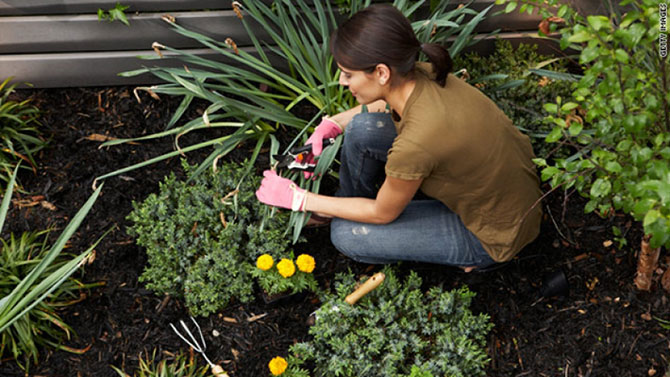Is gardening therapeutic? “Yes,” says Gillian Aldrich, 42, of Maplewood, New Jersey, a magazine editor.
“When you sit at a desk all day, there’s something about literally putting your hands in the dirt, digging and actually creating something that’s really beautiful,” she says. Then added, “There’s something about just being out there that feels kind of elemental.”
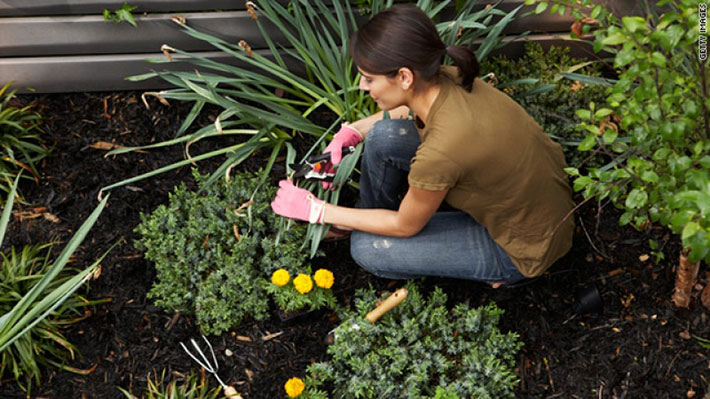
Gardening is good exercise; it removes stress, and takes your mind off from distressing thoughts. And to see your plants grow and blossom is as gratifying as good sex.
It becomes a natural medicine cabinet by adding these 10 plants that have proven effective in treating some very common home ailments:
1. Aloe Vera

Aloe Vera only grows where there is enough sunlight, on moist soil. Though edible, but its taste is horrible. But you don’t plant it for food, but for its medicinal purposes.
Its sap is very good to speed up the healing and reducing the risk infections for:
* Wounds;
* Cuts;
* Burns;
* Eczema;
* Reducing inflammation.
It can also cure these internal problems by drinking its:
* Ulcerative colitis;
* Chronic constipation
* Poor appetite;
* Digestive problems.
2. Marsh Mallow
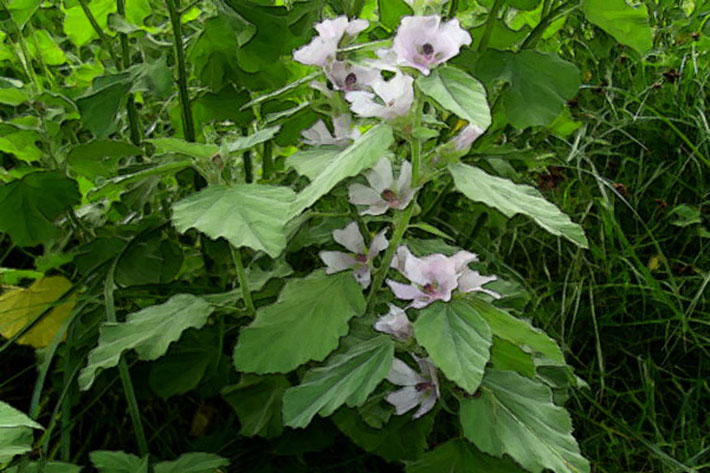
Believe it or not, marshmallows were once made from this plant, and it’s like Nature’s Swiss knife.
Roots:
Are taken internally to treat:
* Inflammation and irritations of the urinary and respiratory mucus membranes;
* Excess stomach acid;
* Peptic ulceration;
* Gastritis;
* Cystitis and frequent urination.
They also have external applications like:
* .Bruises;
* Sprains;
* Aching muscles;
* Insect bites;
* Skin inflammations;
* Splinters;
Leaves:
Are added to salads or eaten boiled, or fried.
3. Great Burdock
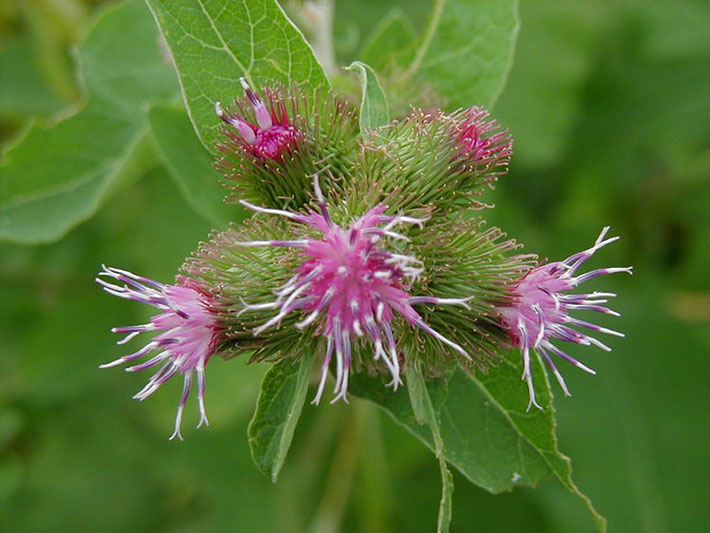
The conditions for growing Great Burdock is like that for Aloe Vera.
Both Chinese and Western cultures use it for detoxification. Its roots are used to treat “toxic overload” that result in throat infections and skin diseases like:
* Boils;
* Rashes;
* Burns;
* Bruises;
* Herpes;
* Eczema;
* Acne;
* Impetigo (a contagious bacterial skin infection forming pustules and yellow, crusty sores);
* Ringworm;
* Bites.
Crush the leaves and seeds to poultice (a soft, moist mass of material) it to bruises, burns, ulcers, and sores.
4. Pot Marigold

No problem in growing as it will thrive in any soil condition – even nutritionally poor, very acidic or very alkaline soils, provided they are moist.
The plant is well-know remedy for skin problems and is externally applied to:
* Bites;
* Stings;
* Sprains;
* Wounds;
* Sore eyes;
* Varicose veins.
Internally, it is used to treat fevers and chronic infections. A concoction of its leaves, when taken regularly, eases varicose veins.
Crushed stems are good for treating corns and warts.
5. Gotu Kola
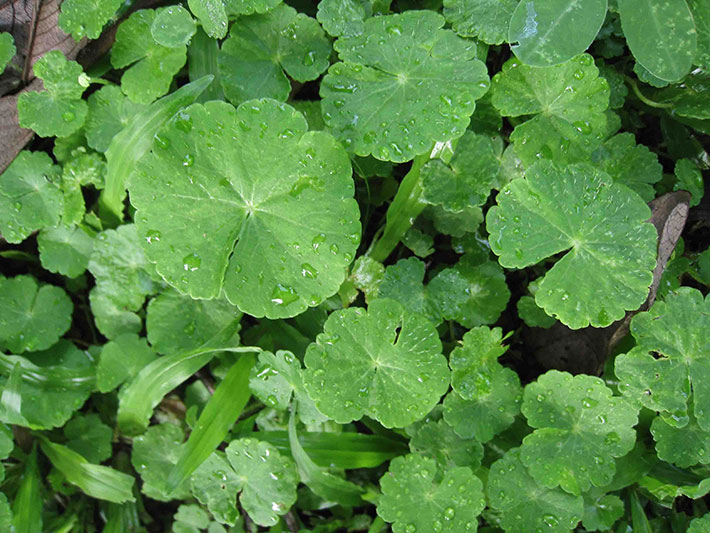
Gotu kola acts on various phases of connective tissue development and stimulates healing of:
* Ulcers;
* Skin injuries;
* Decreasing capillary fragility (capillary fragility is a measure of the resistance to rupture of the small blood vessels, capillaries, which could lead to leakage of red blood cells into the tissue spaces);
* Stimulation of the lipids and proteins necessary for healthy skin;
Its leaves are thought to maintain youthfulness. If crushed and poultice, it can treat open sores.
The gotu kola is also used to treat leprosy. It can revitalize the brain and nervous systems, increase attention span and concentration and treat venous insufficiency (failure of the veins to adequately circulate the blood, especially in the lower extremities).
6. Chamomile

The chamomile’s sweet aroma is used effectively in the area of aromatherapy to treat stress and promote sleep.
It is also used to treat toothaches, earaches, shoulder pain and neuralgia (intense pain, typically intermittent pain along the course of a nerve, especially in the head or face).
7. Globe Artichoke
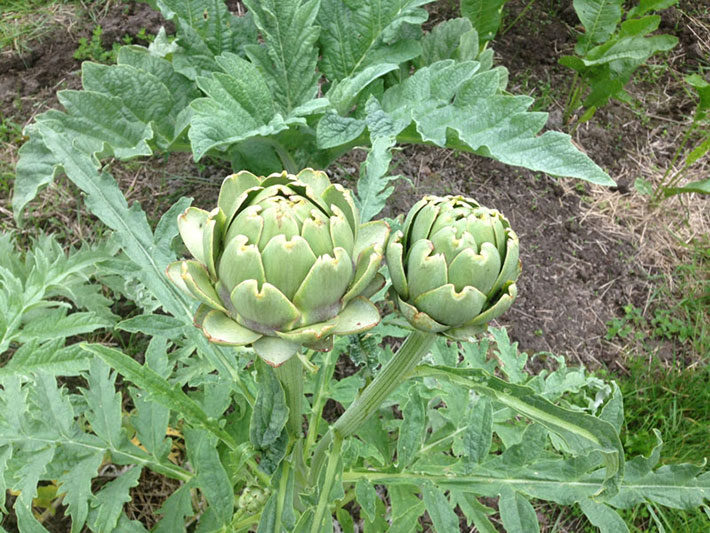
This bitter-tasting plant requires a lot of sun, and has become an important
medicinal herb following the discovery of its cynarin (a chemical in artichoke that reduces cholesterol production by the liver and expels sluggish cholesterol out of the live and gallbladder, thus stimulating the bile production and flow) content.
Its leaves, better harvested before it flowers, help:
* Improve liver and gall bladder function;
* Stimulate the secretion of digestive juices;
* Lower blood cholesterol levels;
* Treat chronic liver and gall bladder diseases;
* Jaundice;
* Hepatitis;
* Arteriosclerosis; (the thickening and hardening of the walls of the arteries);
* Stop early stages of Type 2 diabetes.
8. Chinese Yam

Chinese yam can be eaten raw and growing it is not difficult in fertile, well-watered soil with lots of sunshine.
It is sweet and soothing to the stomach, spleen and has a tonic effect on the lungs and kidneys.
It is internally to treat:
* Fatigue;
* Weight loss;
* Loss of appetite;
* Poor digestion;
* Chronic diarrhea;
* Asthma;
* Dry coughs;
* Uncontrolled urination;
* Diabetes;
* Emotional instability.
Externally, it is good treatment for:
* Ulcers;
* Boils;
* Abscesses.
9. Echinacea

Echinacea is considered the world’s most important medicinal herbs.
It can raise the body’s resistance to bacterial and viral infections by stimulating
the immune system.
It also contains antibiotic properties that helps relieve allergies. Its roots are good for treating sores, wounds, and burns.
It was once used by Native Americans to treat insect bites, stings and snakebites.
10. Siberian Ginseng

This, too, has a wide range of health benefits and its medicinal properties are used for:
* Menopause problems;
* Geriatric debility (disease of the old);
* Physical and mental stress;
* Treating bone marrow suppression caused by chemotherapy or radiation;
* Angina ( a condition marked by severe pain the chest, often spreading to the shoulders, arms, and neck, caused by an inadequate blood supply to the heart);
* Hypercholesterolemia (excess cholesterol in the blood stream) and neurasthenia (an ill-defined medical condition characterized by lassitude, fatigue, headache, and irritability, associated with emotional disturbance) with headache;
* Insomnia;
* Poor appetite;
* Increasing endurance;
* Memory improvement;
* Anti-inflammatory purposes;
At home I rely on my guava tree.

Its young leaves, when boiled, become one of Nature’s most potent antiseptic.
~oOo~

